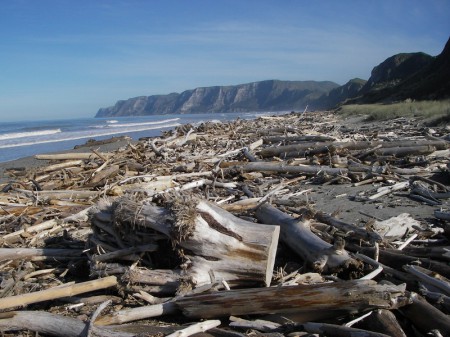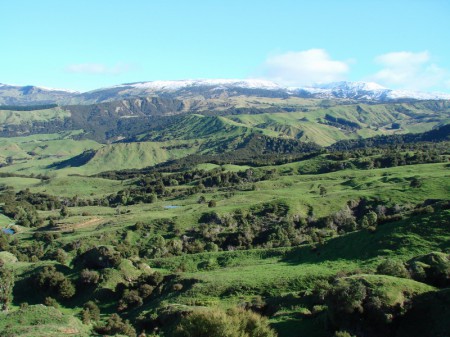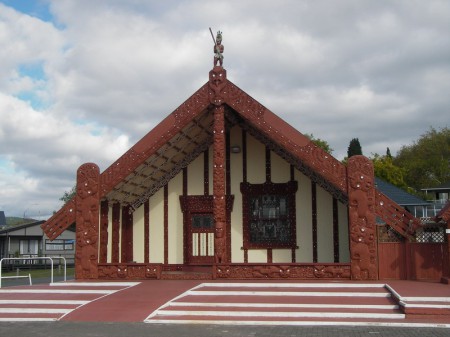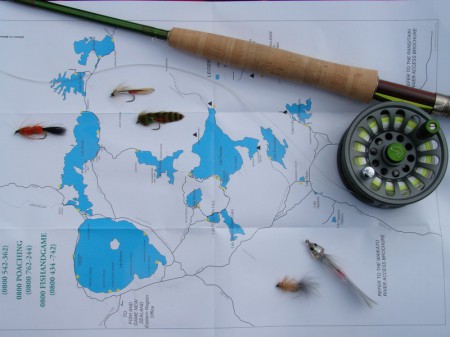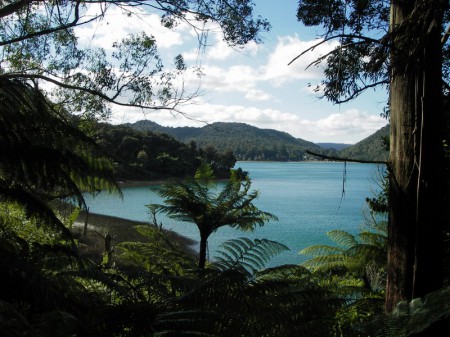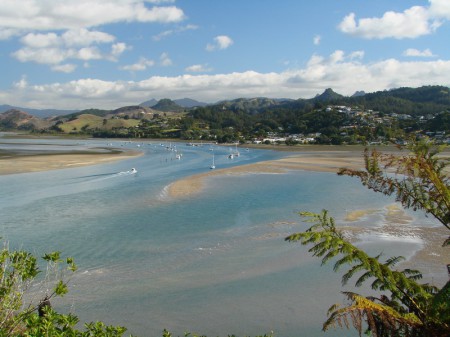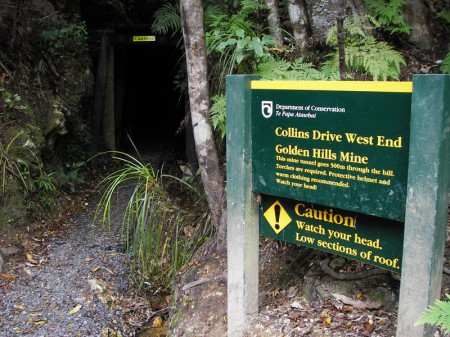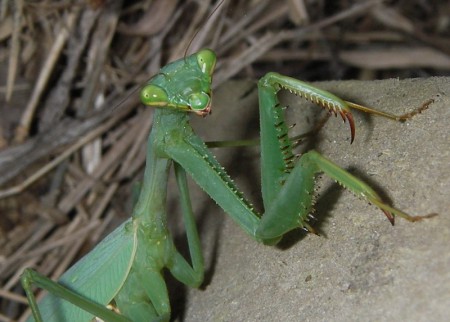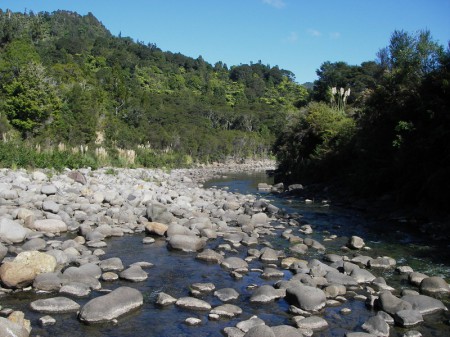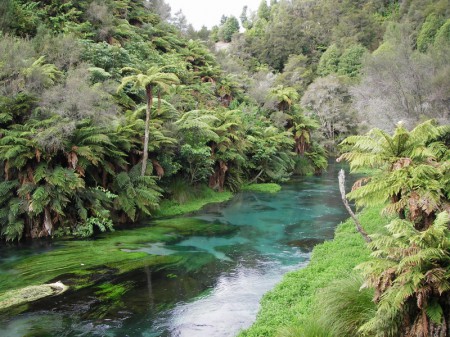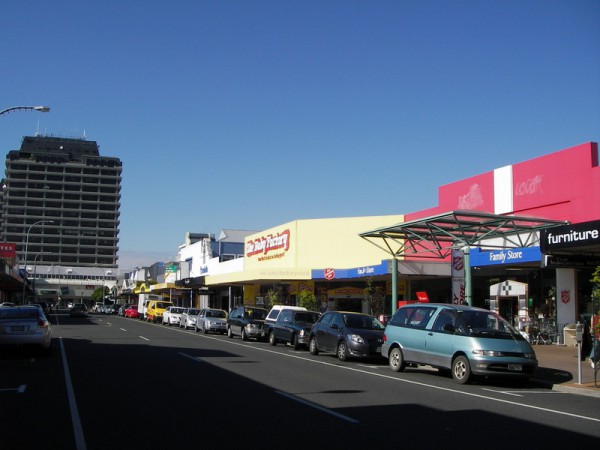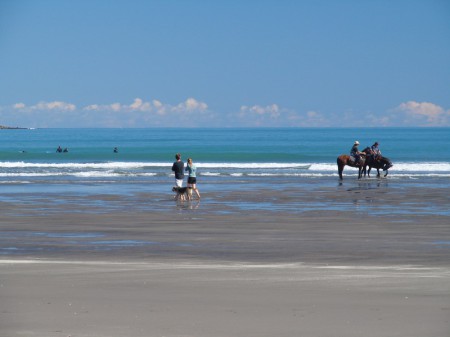Lucky days
The drive from Wairoa north of Hawke Bay to Murupara is arguably one of the most scenic in the country. Also the road through the Urewera National Park is unsealed for many kilometers, it is suitable for conventional cars. Rivers, creeks, native forest and of course beautiful Lake Waikaremoana are all features of a special journey.
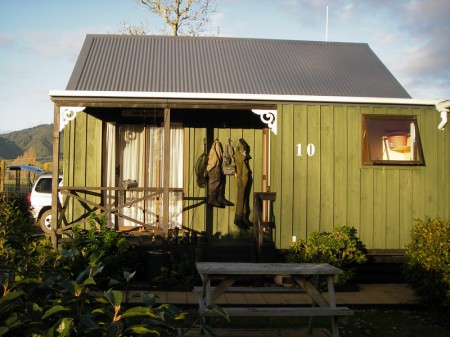 On arrival at Aniwhenua Lodge near Murupara we were welcomed by Luna, a cheeky ostrich peeking through the window of our cottage. Our hosts Graeme and Joan Ryder quickly set us up with the latest information about the river conditions and the fishing and off we went. With the main rivers, the Rangitaiki and the Whirinaki, running pretty high and dirty, we had a ball fishing small tributaries of the Rangitaiki River for the next 9 days. We caught some very nice Brown and Rainbow trout on our 5 weight rods set up with 2 nymphs. The fish were aggressive and after trying natural patterns as a point fly without much success, we used small egg patterns (#14 or 16) with good results.
On arrival at Aniwhenua Lodge near Murupara we were welcomed by Luna, a cheeky ostrich peeking through the window of our cottage. Our hosts Graeme and Joan Ryder quickly set us up with the latest information about the river conditions and the fishing and off we went. With the main rivers, the Rangitaiki and the Whirinaki, running pretty high and dirty, we had a ball fishing small tributaries of the Rangitaiki River for the next 9 days. We caught some very nice Brown and Rainbow trout on our 5 weight rods set up with 2 nymphs. The fish were aggressive and after trying natural patterns as a point fly without much success, we used small egg patterns (#14 or 16) with good results.
The Horomanga, a small river flowing through a very narrow, beautiful valley usually gets a good run of fish from Lake Aniwhenua. And the Horomanga has the added bonus of a basic track following its banks. Because of the thick, impenetrable vegetation along many of the rivers with black berry and gorse playing havoc with waders, the only way of getting up and down a river is usually in the river itself. So after many hours of fishing, a track makes walking back much easier and quicker than having to wade all the way back in the water.
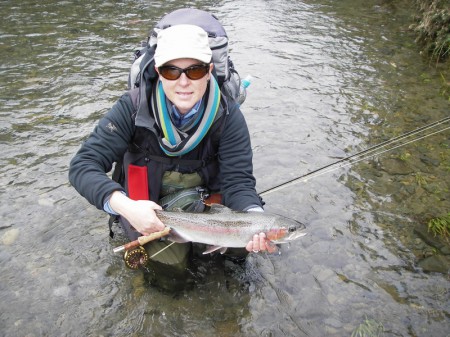 The fishing was great and being on our own on the water most of the time was even better. But even good things come to an end and winter will hopefully see a lot more fish coming up the rivers and doing their thing.
The fishing was great and being on our own on the water most of the time was even better. But even good things come to an end and winter will hopefully see a lot more fish coming up the rivers and doing their thing.
We are already looking forward to being back in summer. Aniwhenua Lodge is definitely a great place to be with so many backcountry rivers and Lake Aniwhenua right at its doorstep.
